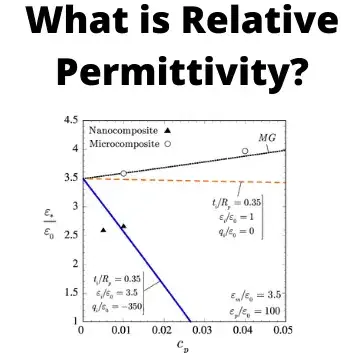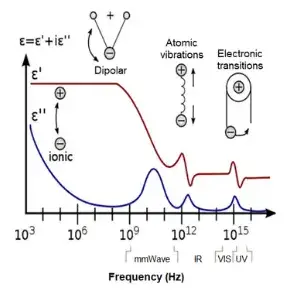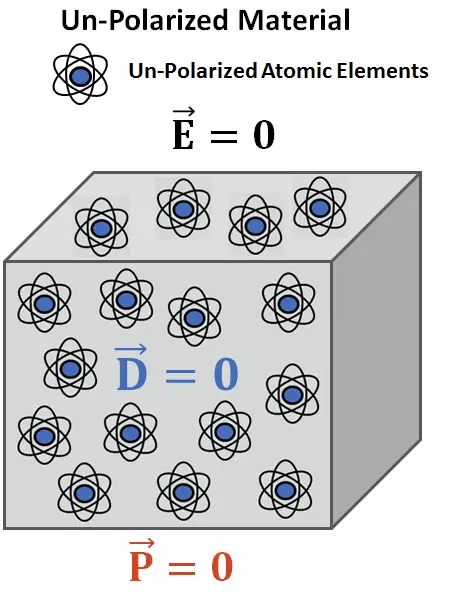Dielectric materials play a crucial role in the functionality of many modern devices, from smartphones to satellites. These materials are defined primarily by their ability to support electric fields while storing electrical energy. The effectiveness of these materials is quantified using two key parameters: the dielectric constant and relative permittivity. Although often used interchangeably in colloquial discussion, these terms describe distinct properties that are fundamental to the fields of electrical engineering and materials science.
The dielectric constant is a number that describes how well a material can store electrical energy in an electric field compared to a vacuum. Relative permittivity, on the other hand, is the ratio of the capacitance of a capacitor using the material as a dielectric, compared to the capacitance of the same capacitor using a vacuum as a dielectric. Essentially, while both relate to the material’s ability to support an electric field, the dielectric constant often refers to a specific value, and relative permittivity to a ratio based on vacuum conditions.
Both parameters are essential for designing electronic components that are efficient, small, and effective. Understanding these properties helps engineers select the right materials for specific applications, ensuring that devices operate at their optimal capacity. Furthermore, as technology progresses, the demand for materials with better dielectric properties increases, highlighting the importance of accurate and precise use of these terms.

Basic Concepts
What is Dielectric Constant?
The dielectric constant is a measure that quantifies a material’s ability to store electrical energy in an electric field. It is a dimensionless number, also known as the relative permittivity. Technically, it’s the ratio of the permittivity of a substance to the permittivity of free space (vacuum). This parameter is crucial in determining how much electric charge a material can store, which directly affects the efficiency of devices such as capacitors.
What is Relative Permittivity?
Relative permittivity, often simply called permittivity, describes the ability of a dielectric material to permit the electric field’s penetration. It is also dimensionless and expressed as the ratio of the material’s electric permittivity to the vacuum permittivity. Relative permittivity is a fundamental property in physics that affects the operation of various electrical components, influencing how they store and transmit electrical energy.
Core Differences
Definition and Meaning
While both terms often appear interchangeably, dielectric constant and relative permittivity serve specific roles. The dielectric constant is typically used when discussing the electric storage capacity in comparison to a vacuum. In contrast, relative permittivity is used more broadly to describe how an electric field interacts with a material, irrespective of comparison standards.
Formula Comparison
The formula for the dielectric constant 𝐾K is given by: 𝐾=𝐶𝐶0K=C0C where 𝐶C is the capacitance with the dielectric, and 𝐶0C0 is the capacitance in a vacuum.
For relative permittivity 𝜀𝑟εr, the formula is: 𝜀𝑟=𝜀𝜀0εr=ε0ε where 𝜀ε is the permittivity of the material and 𝜀0ε0 is the permittivity of free space.
Units and Measurement
Both the dielectric constant and relative permittivity are dimensionless quantities. They do not have units because they are ratios of similar units canceling out each other. Measuring these properties involves comparing capacities or field behaviors under controlled laboratory conditions.
Practical Applications
Electronics and Capacitors
Capacitors are fundamental components in electronic circuits, and their performance heavily relies on the dielectric materials used. Materials with a high dielectric constant are preferred as they allow the capacitor to store more electric charge, enhancing the overall efficiency of the device.
Signal Processing
In signal processing, dielectric materials with specific permittivity values are used to manage signal speed and integrity across circuits. The relative permittivity affects the phase velocity of the signal passing through the medium, which is critical for maintaining signal clarity and strength in high-frequency applications.
Energy Storage Solutions
Advancements in energy storage technologies often hinge on finding materials with optimal dielectric properties. High relative permittivity materials can improve energy density and efficiency in batteries and other storage devices, pushing forward the capabilities of renewable energy systems.
Key Factors Influencing Both
Material Type
The choice of material significantly affects the dielectric constant and relative permittivity. Materials like ceramics and polymers have different intrinsic properties that influence how they interact with electric fields, dictating their suitability for various applications.
Temperature Effects
Temperature changes can alter the dielectric properties of materials. Generally, an increase in temperature leads to a decrease in the dielectric constant due to increased molecular agitation, which disrupts the alignment of the dipoles within the material.
Frequency Dependency
The frequency of the applied electric field also impacts the relative permittivity of materials. At higher frequencies, the ability of the dipoles to align with the field decreases, typically reducing the material’s effective permittivity. This characteristic is particularly important in radio frequency and microwave engineering applications.

Calculations and Examples
Calculating Dielectric Constant
Calculating the dielectric constant involves a straightforward process that can be conducted using standard laboratory equipment. Here are the basic steps:
- Measure Capacitance with Dielectric: First, measure the capacitance of the capacitor with the dielectric material inserted between its plates.
- Measure Capacitance without Dielectric: Next, measure the capacitance of the same capacitor but without the dielectric material (i.e., in a vacuum or air).
- Calculate Ratio: The dielectric constant is then calculated by dividing the capacitance measured with the dielectric by the capacitance measured without the dielectric.
This calculation helps determine how much more effectively a material stores electric charge compared to a vacuum.
Case Study: Relative Permittivity
Consider a case study involving the use of barium titanate (BaTiO₃), a ceramic material known for its high dielectric properties. In this example, engineers are testing its effectiveness for use in high-capacity capacitors:
- Setup: A capacitor is constructed with barium titanate as the dielectric material.
- Experiment: The capacitance of the capacitor is measured at various temperatures and frequencies to assess changes in relative permittivity.
- Results: The results indicate that barium titanate maintains a high relative permittivity across a broad range of frequencies but shows variability with temperature changes.
This case study demonstrates how relative permittivity is critical in selecting materials for specific applications based on environmental conditions and operational frequencies.
Common Misunderstandings
Misinterpretation of Terms
Confusion often arises between dielectric constant and relative permittivity due to their similar conceptual foundations. However, the key difference lies in their application context:
- Dielectric Constant: Typically used in engineering contexts to compare materials under similar conditions.
- Relative Permittivity: More common in scientific discussions that focus on fundamental material properties without direct comparisons.
Application Errors
Errors in application occur when materials are selected based on incorrect values of dielectric constant or relative permittivity, which can lead to device failure. For instance, using a material with a lower than required dielectric constant in a high-voltage capacitor can result in capacitor breakdown and circuit failure.
Industry Impact
Advances in Material Science
The continuous research and development in material science have led to the discovery and optimization of materials with exceptional dielectric properties. Innovations such as polymer-ceramic composites have been shown to offer superior performance for specific applications, driving advancements in both consumer electronics and industrial applications.
Impact on Consumer Electronics
The impact of dielectric materials in consumer electronics is profound. Their ability to affect capacitance directly influences the size and efficiency of devices:
- Smartphones: Improved dielectric materials allow for smaller, more efficient capacitors, which in turn helps reduce the overall size of the phone while boosting battery life.
- Computers: High-quality dielectric materials in computer capacitors improve power supply efficiency, which enhances the overall performance and reliability of the system.
These advancements underscore the critical role of dielectric constant and relative permittivity in modern electronics. By continuing to refine these materials, engineers can create more powerful, efficient, and compact electronic devices that meet the demands of today’s technology-driven world.
Frequently Asked Questions
What is a Dielectric Material?
Dielectric materials are insulators that can be polarized by an electric field, meaning they do not conduct electricity but can support electric fields. This characteristic makes them essential in various applications, including capacitors where they improve energy storage efficiency.
How Does Temperature Affect Dielectric Constant?
Temperature changes can significantly impact the dielectric constant of a material. Generally, as temperature increases, the dielectric constant decreases. This behavior is due to the increased thermal energy, which disrupts the alignment of the dipoles within the material.
What is the Role of Frequency in Relative Permittivity?
The relative permittivity of a material can vary with the frequency of the applied electric field. At higher frequencies, permittivity usually decreases due to the dipole relaxation time — the time it takes for dipoles in a material to respond to an electric field becomes comparable or less than the period of the electric field.
Can Dielectric Constant be Negative?
While unusual, certain metamaterials can exhibit a negative dielectric constant at specific frequencies. This unique property results from their engineered composite nature, which can cause an inverse response to electric fields compared to conventional materials.
Conclusion
The exploration of dielectric constant and relative permittivity not only enhances our understanding of electrical insulation and energy storage but also drives innovation in electronic device manufacturing. By distinguishing between these two critical properties, engineers can design more efficient and compact components. This understanding is increasingly vital as we push the boundaries of what is technically feasible in electronic applications.
Future research and development in dielectric materials will likely focus on discovering and utilizing materials that exhibit superior dielectric properties at various frequencies and temperatures. Such advancements will continue to revolutionize technology, making electronic devices more powerful, efficient, and sustainable.

